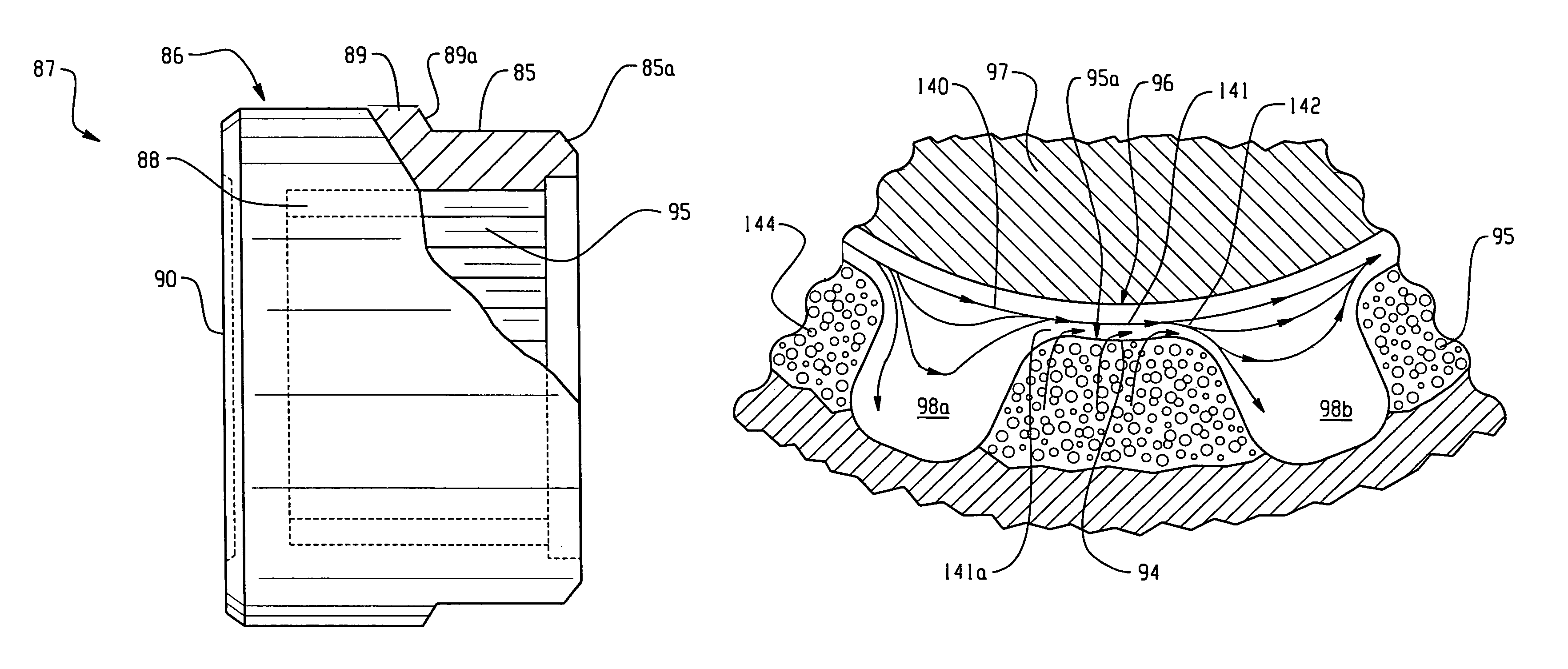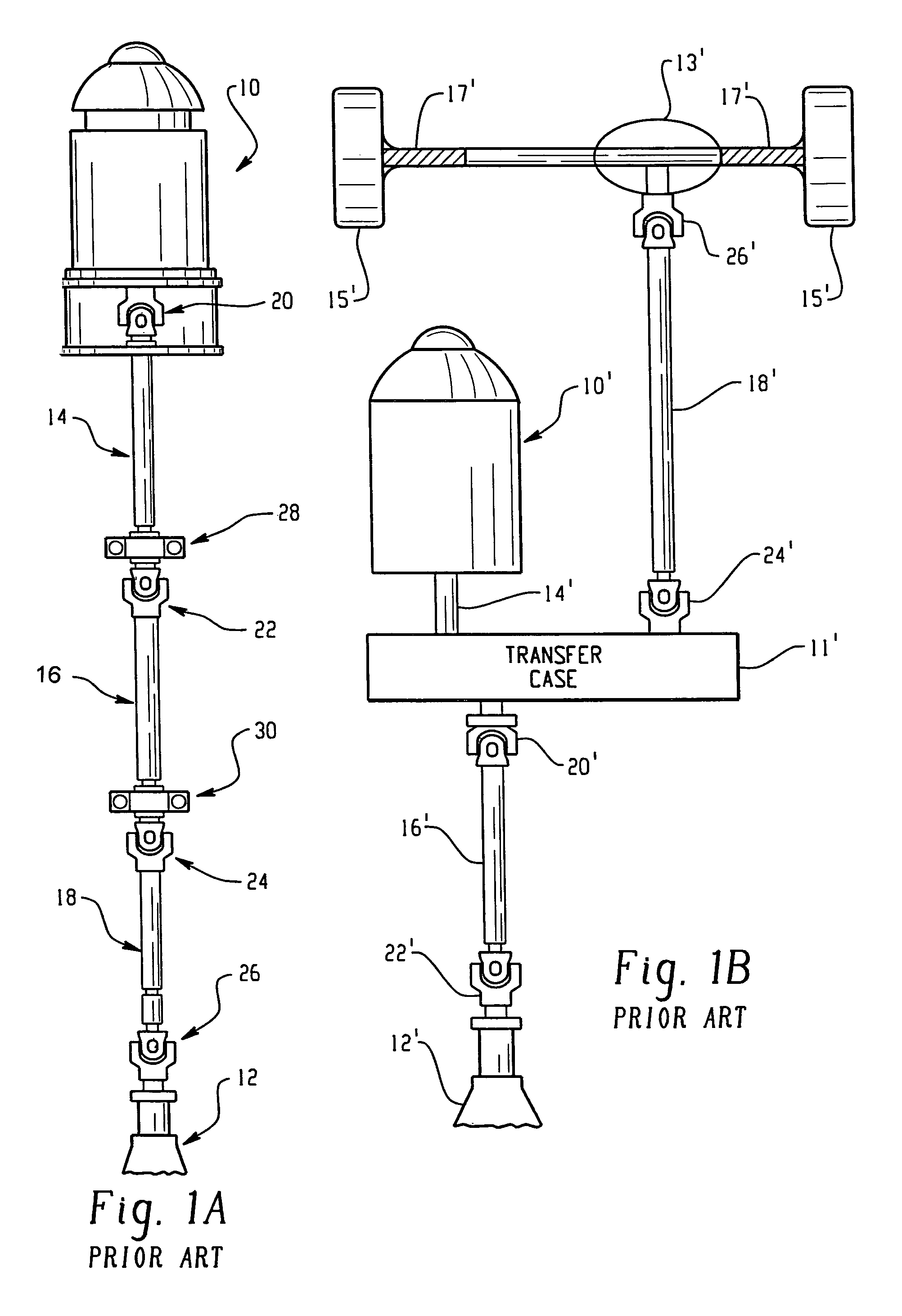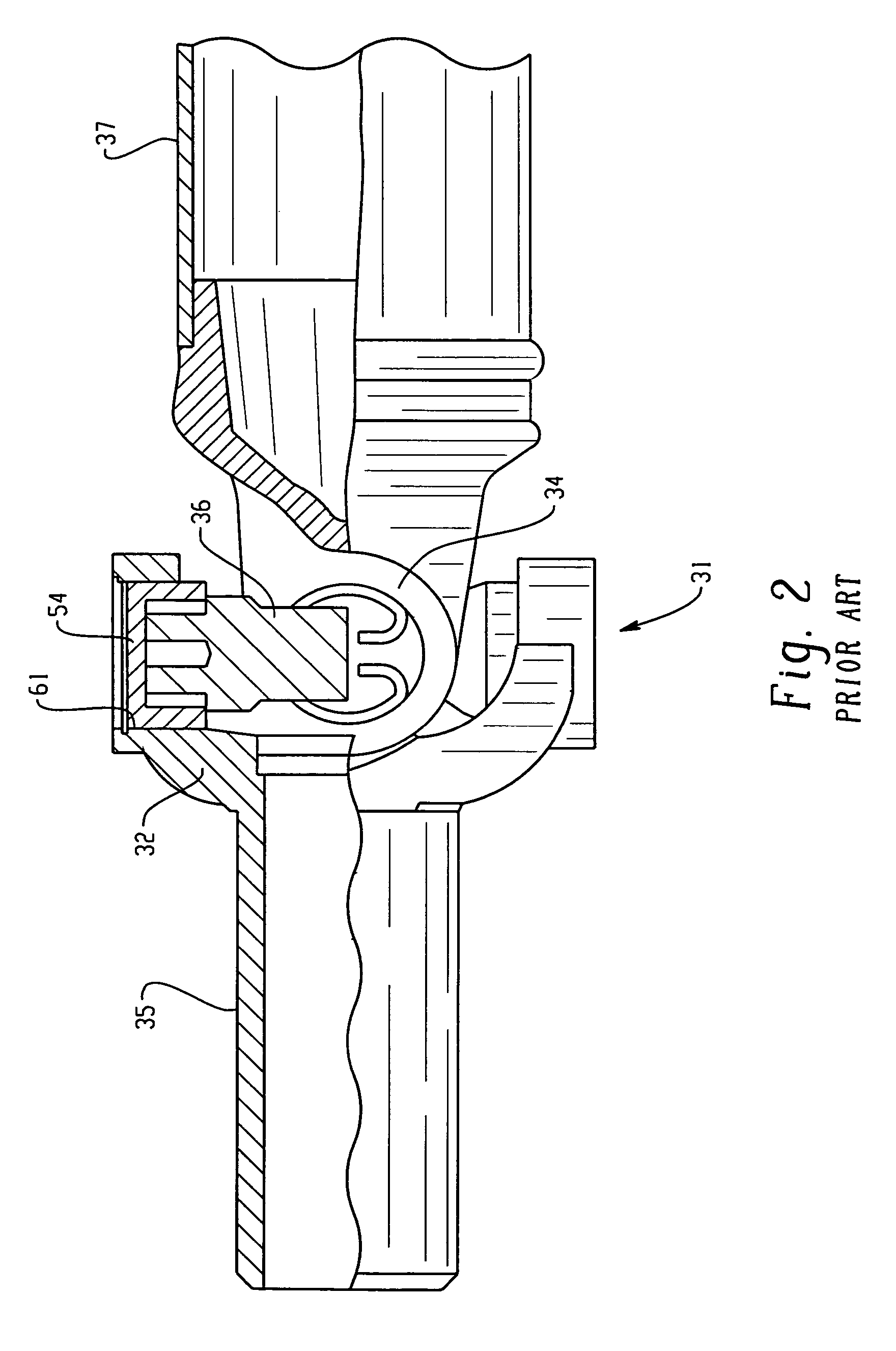Bearing assembly having debris removal system
- Summary
- Abstract
- Description
- Claims
- Application Information
AI Technical Summary
Benefits of technology
Problems solved by technology
Method used
Image
Examples
Embodiment Construction
[0036]With reference to FIG. 1A, a drive line interconnects a power source and an operating unit. The drive line of FIG. 1A is the type often employed in a conventional rear-wheel drive vehicle. The power source in FIG. 1A is identified by reference numeral 10 and may be in the form of an electric motor, internal combustion engine or other power producing device. The driven or operating unit is designated by reference numeral 12. The drive line interconnects the power source 10 with the operating unit 12 and is defined by a plurality of drive shafts 14,16,18. Universal joints 20,22,24,26 provide for an interconnection of the respective drive shafts 14,16,18 with one another as well as with the power source 10 and the operating unit 12. Thus, the universal joints perform a coupling function for the transmission of power from one member to another. Center shaft support bearings 28,30 are used to support the drive line, as is known in the art.
[0037]With additional reference to FIG. 1B,...
PUM
 Login to View More
Login to View More Abstract
Description
Claims
Application Information
 Login to View More
Login to View More - R&D
- Intellectual Property
- Life Sciences
- Materials
- Tech Scout
- Unparalleled Data Quality
- Higher Quality Content
- 60% Fewer Hallucinations
Browse by: Latest US Patents, China's latest patents, Technical Efficacy Thesaurus, Application Domain, Technology Topic, Popular Technical Reports.
© 2025 PatSnap. All rights reserved.Legal|Privacy policy|Modern Slavery Act Transparency Statement|Sitemap|About US| Contact US: help@patsnap.com



